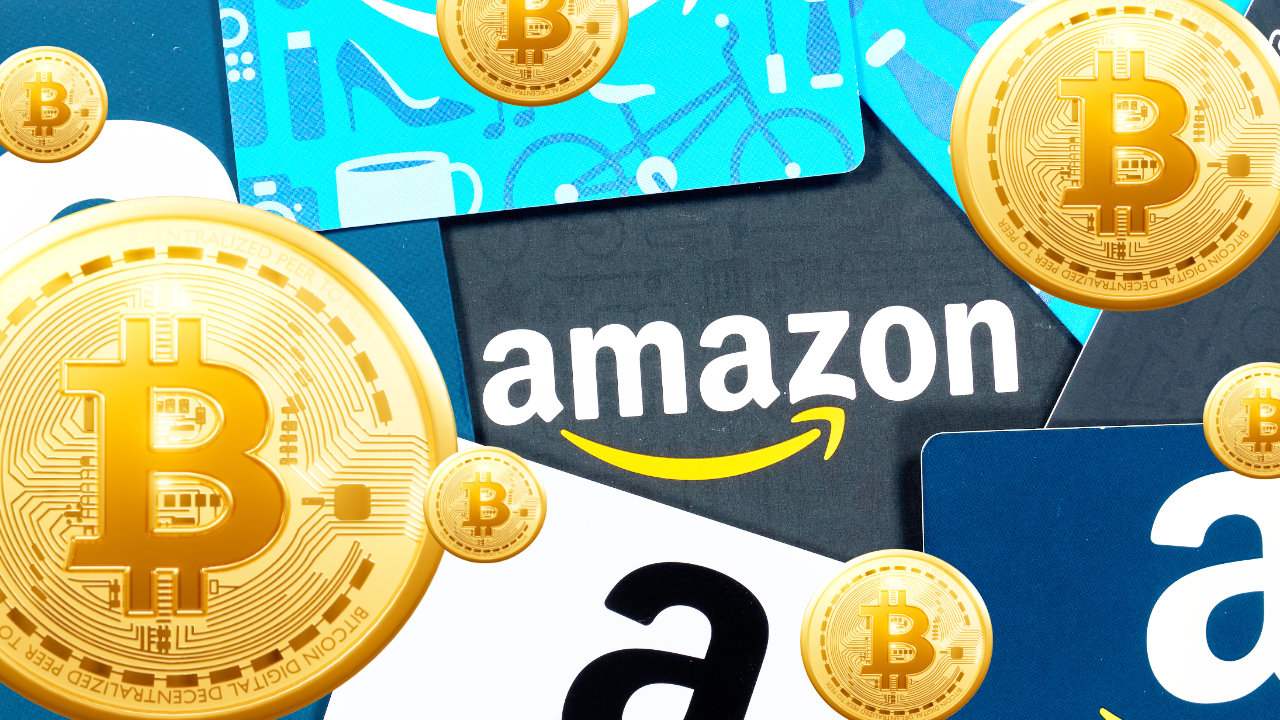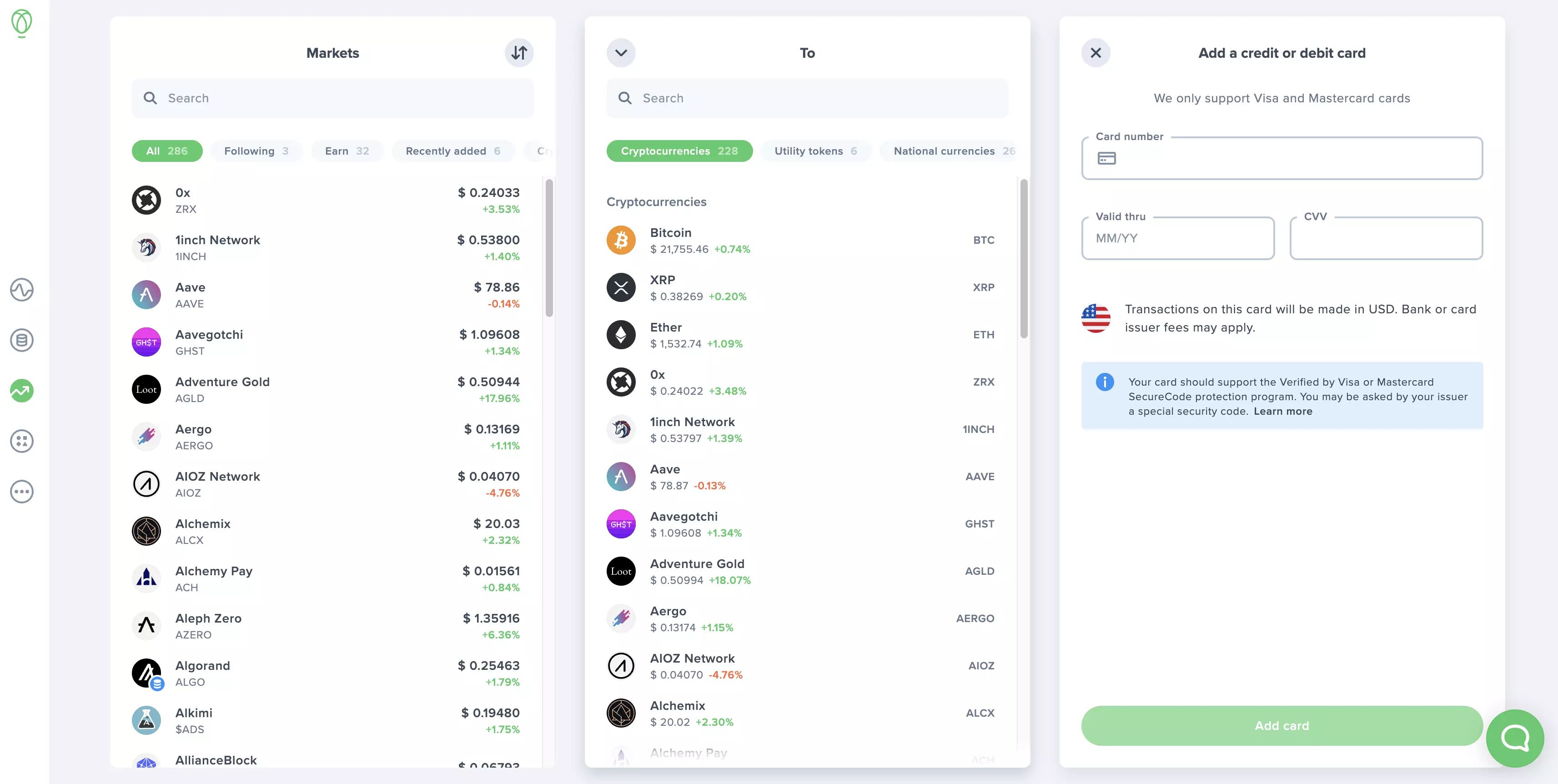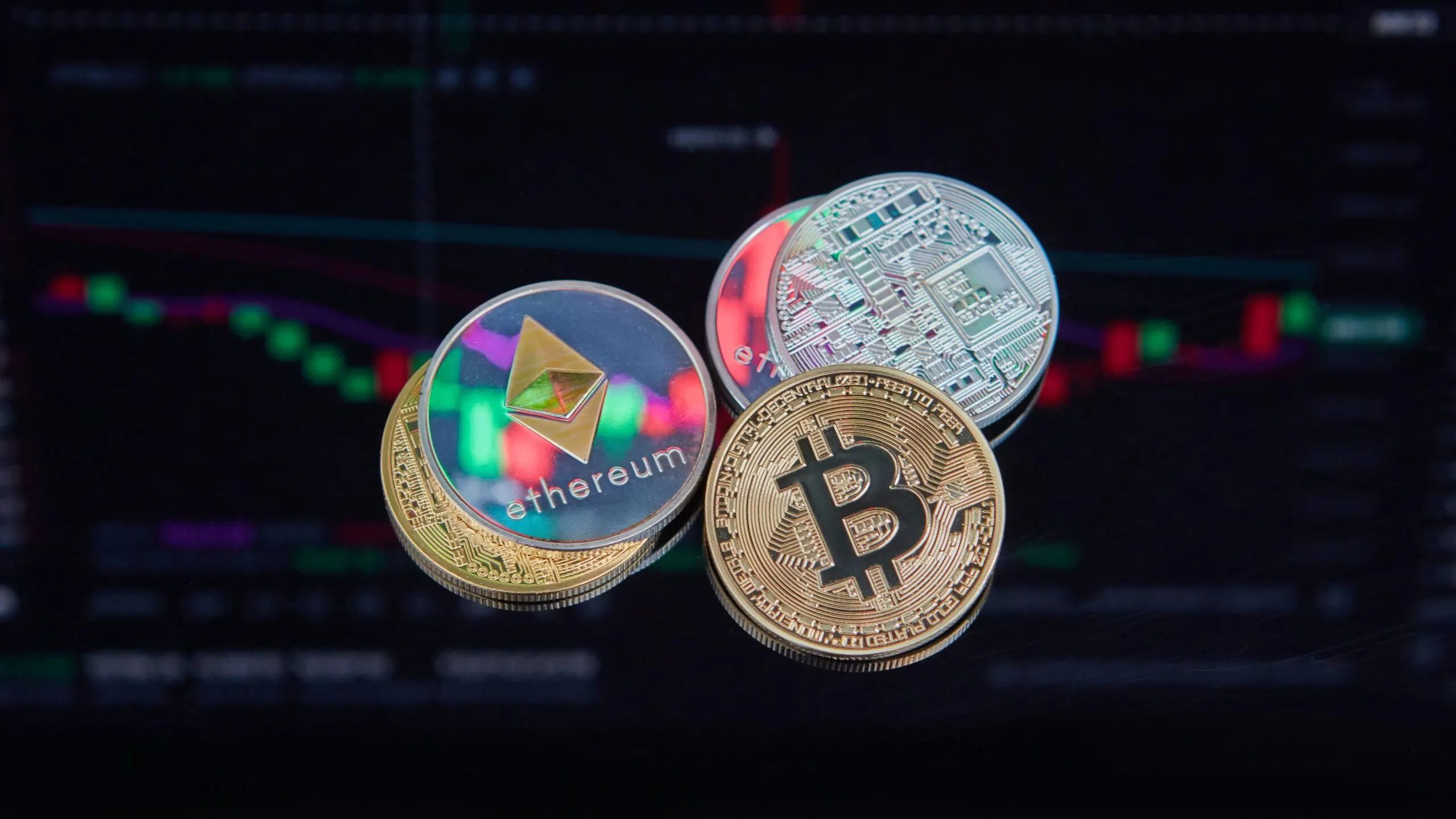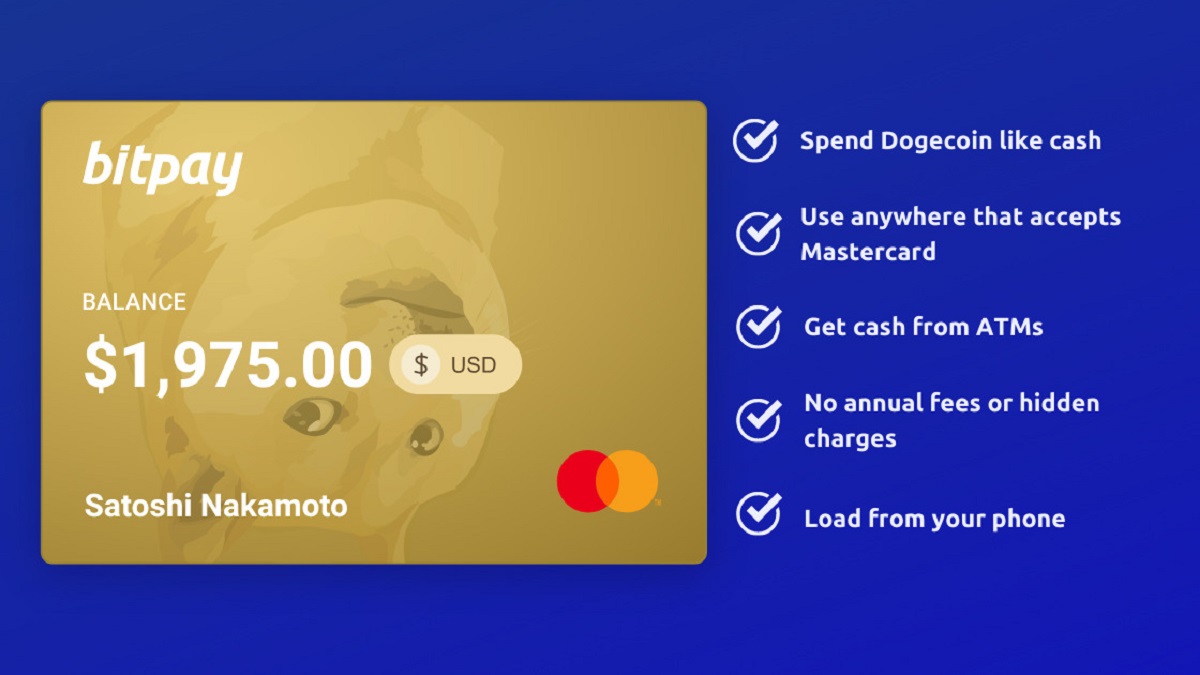Introduction
Welcome to the digital age, where technology has revolutionized the way we conduct financial transactions. Cryptocurrencies, in particular, have emerged as a popular alternative to traditional forms of currency. With the rise of cryptocurrencies like Bitcoin, Ethereum, and Ripple, many wonder which digital currency Amazon, the e-commerce giant, will eventually embrace.
In recent years, cryptocurrencies have gained momentum and garnered attention from investors, businesses, and governments alike. These decentralized currencies offer numerous benefits, such as high security, transparency, and fast transactions. As a result, more and more companies are exploring the possibility of integrating digital currencies into their payment systems, and Amazon appears to be at the forefront of this movement.
Amazon, with its vast online marketplace and millions of customers worldwide, has the potential to significantly impact the adoption and acceptance of digital currencies. The company has been known for its innovative approach to business, constantly seeking new ways to improve customer experience. Therefore, it comes as no surprise that Amazon is considering implementing a digital currency payment system.
In this article, we will delve into the world of digital currencies and explore the reasoning behind Amazon’s interest in them. We will also examine the factors that Amazon needs to consider when selecting a digital currency for its platform. Furthermore, we will discuss potential candidates that could be suitable for Amazon’s digital currency and evaluate the advantages and disadvantages of each option.
Additionally, we will explore the challenges of implementing a digital currency system on Amazon’s platform and the potential impact it may have on the broader market. By examining all these aspects, we can gain insights into the potential future of digital currency on one of the world’s largest online marketplaces.
Understanding Digital Currency
To comprehend the significance of Amazon’s potential adoption of a digital currency, it is crucial to understand what a digital currency is and how it functions. In essence, a digital currency is a form of virtual or electronic money that exists solely in digital form.
Unlike traditional fiat currencies issued by governments, digital currencies operate independently of central banks and governments. They utilize cryptographic technology, known as blockchain, to secure transactions and verify the transfer of funds. This decentralized nature eliminates the need for intermediaries like banks, allowing for faster and more cost-effective transactions.
One of the most well-known digital currencies is Bitcoin, introduced in 2009. Bitcoin operates on a peer-to-peer network, enabling users to send and receive funds directly without the involvement of third parties. Transactions are recorded on a public ledger called the blockchain, ensuring transparency and preventing fraud.
While Bitcoin remains the dominant player in the digital currency space, other cryptocurrencies have also gained traction. Ethereum, for instance, introduced the concept of smart contracts, which are self-executing agreements between parties. This innovative feature has opened up possibilities for various applications beyond just financial transactions.
Ripple, on the other hand, focuses on enabling fast and low-cost international money transfers. Its technology aims to streamline the cross-border payment process by reducing fees and settlement times.
These are just a few examples of the diverse range of digital currencies available today, each with its own unique features and functionalities.
It is important to note that the value of digital currencies can be highly volatile, with prices subject to significant fluctuations. This volatility stems from various factors such as market demand, regulatory changes, and investor sentiment. As a result, digital currencies can be considered both an investment opportunity and a speculative venture.
As digital currencies gain popularity, they are gradually becoming more widely accepted as a form of payment. Numerous online retailers, small businesses, and even some brick-and-mortar stores now accept digital currencies as a means of exchange. This growing acceptance has fueled the interest of larger corporations, leading to speculation about when major players like Amazon will enter the digital currency arena.
Amazon’s Foray into Cryptocurrency
As a market leader in e-commerce, Amazon has been at the forefront of innovation, constantly seeking ways to improve the shopping experience for its customers. It comes as no surprise that the company has been exploring the integration of digital currencies into its payment ecosystem.
While Amazon has not yet announced its official adoption of a specific cryptocurrency, there have been several indications pointing to the company’s interest in the space. In 2017, Amazon registered several cryptocurrency-related domain names, including amazonethereum.com, amazoncryptocurrency.com, and amazonbitcoins.com. Although the registration of these domains does not necessarily confirm a specific course of action, it does suggest that Amazon is actively considering cryptocurrencies.
Moreover, Amazon’s subsidiary, Amazon Pay, has previously extended its services to select cryptocurrencies. In 2019, the company joined forces with a digital payment service provider, BitPay, allowing customers to top up their Amazon accounts using cryptocurrencies such as Bitcoin. This partnership demonstrated Amazon’s willingness to venture into the world of digital currencies, albeit in a limited capacity.
With a growing interest in blockchain technology and the potential benefits it holds, it is likely that Amazon is closely monitoring the developments in the digital currency space. By exploring the integration of cryptocurrencies, Amazon aims to provide its customers with more flexible and convenient payment options, while also staying ahead of its competitors.
However, it is important to note that there are still obstacles and uncertainties that Amazon, like any other company considering digital currencies, must address. Factors such as regulatory compliance, scalability, and security will play a crucial role in determining the feasibility and success of Amazon’s foray into cryptocurrency.
Ultimately, Amazon’s entry into the cryptocurrency world could have far-reaching implications not only for the company itself but also for the broader adoption and acceptance of digital currencies. As one of the largest e-commerce platforms globally, Amazon has the potential to drive mainstream adoption of cryptocurrencies and influence other businesses to follow suit.
Despite the challenges and uncertainties, the question remains: which digital currency will Amazon ultimately choose to embrace? In the next section, we will explore the factors that Amazon needs to consider when selecting a digital currency for its platform.
Factors to Consider for Amazon’s Choice of Digital Currency
As Amazon explores the integration of a digital currency into its platform, several key factors will influence the company’s decision-making process. Choosing the right digital currency entails careful consideration of factors such as stability, scalability, security, user adoption, and regulatory compliance.
Stability is a crucial factor for any digital currency that aims to become widely accepted. Amazon would likely prefer a digital currency with a stable value or the potential for stability, as this would provide a more reliable medium of exchange for goods and services. Currencies with high volatility may discourage both merchants and consumers from using them in everyday transactions.
Scalability is another critical consideration. With Amazon processing millions of transactions daily, the chosen digital currency must be able to handle a high volume of transactions without compromising speed or efficiency. Ensuring scalability will be essential to maintain a seamless shopping experience for Amazon’s customers.
Security is paramount when dealing with digital currencies. Amazon will need to select a currency with robust security measures in place to prevent fraud and protect user information. The chosen currency should utilize advanced cryptographic techniques to secure transactions and wallets, ensuring the safety of funds transacted on the platform.
User adoption plays a significant role in determining the success of any digital currency. Amazon would likely prioritize a currency that has a large and active user base, as this would increase the likelihood of widespread adoption among its customers. A currency with a vibrant community and established partnerships may also enhance the overall user experience.
Regulatory compliance is a critical aspect that cannot be overlooked. Amazon will need to ensure that the chosen digital currency aligns with legal and regulatory requirements in the jurisdictions where it operates. This includes adhering to anti-money laundering (AML) and know-your-customer (KYC) regulations, as well as ensuring compliance with tax laws and financial regulations.
Additionally, Amazon may consider factors like transaction fees, accessibility, and integration capabilities when selecting a digital currency. Low transaction fees would be attractive for both Amazon and its customers, enabling cost-effective transactions. Accessibility is also essential, as the chosen currency should be easily accessible and usable by a wide range of individuals across the globe. Finally, seamless integration with Amazon’s existing payment infrastructure and services would streamline the implementation process.
Considering all these factors, Amazon’s choice of digital currency will require careful evaluation and analysis. The selected currency must align with Amazon’s goals, values, and commitment to delivering exceptional customer experiences. By choosing the right digital currency, Amazon can further revolutionize the e-commerce space and shape the future of online transactions.
Potential Candidates for Amazon’s Digital Currency
With Amazon’s interest in adopting a digital currency, several potential candidates come to mind, each with its own unique features and advantages. While Amazon has not made any official announcements regarding its choice of digital currency, we can speculate on some potential options that could align with the company’s goals.
Bitcoin (BTC): As the pioneer of cryptocurrencies, Bitcoin remains the most widely recognized and established digital currency. Its large and active user base, liquidity, and global acceptance make it an attractive option for Amazon. However, Bitcoin’s high transaction fees and slower processing times could be a drawback for a high-volume platform like Amazon.
Ethereum (ETH): Ethereum’s advanced smart contract capabilities provide a range of possibilities beyond simple payments. With Ethereum, Amazon could potentially implement more complex functionalities, such as decentralized applications and tokenized assets. However, scalability issues and potential regulatory challenges may need to be addressed before Ethereum becomes a viable option for Amazon.
Ripple (XRP): Ripple is specifically designed for fast and low-cost international money transfers. Its focus on enhancing cross-border transactions could be appealing to Amazon, given its global presence. Ripple’s partnerships with major financial institutions and its established payment corridors could facilitate seamless integration into Amazon’s existing payment infrastructure.
Stellar (XLM): Stellar, like Ripple, emphasizes fast and low-cost transactions. It offers a decentralized platform for peer-to-peer payments and has gained recognition for its focus on financial inclusion. Stellar’s emphasis on micropayments and its potential to reach unbanked populations could align with Amazon’s customer-centric approach and commitment to accessibility.
Amazon Coin: Amazon has the option of creating its own digital currency, similar to what companies like Facebook have done with Libra. By developing a proprietary currency, Amazon can have more control over the features, stability, and integration with its platform. This would provide a seamless payment experience for Amazon customers, but it would also come with the responsibility of managing and regulating the digital currency ecosystem.
These are just a few potential candidates for Amazon’s digital currency. Other cryptocurrencies, such as Litecoin (LTC), Bitcoin Cash (BCH), or even new and emerging digital currencies, could also be considered as the industry evolves.
Ultimately, Amazon’s choice of digital currency will depend on a variety of factors, including stability, scalability, security, user adoption, and regulatory compliance. The selected currency must align with Amazon’s goals and values while providing a seamless and user-friendly payment experience for its customers.
It is important to note that while speculation can be made, the official word from Amazon is awaited to confirm the chosen digital currency for its platform.
Advantages and Disadvantages of Different Digital Currencies
When considering the adoption of a digital currency, it is essential to weigh the advantages and disadvantages of different options. Each digital currency brings its own set of strengths and weaknesses, which may impact its suitability for integration into Amazon’s platform.
Bitcoin (BTC): Bitcoin, being the first and most well-known cryptocurrency, offers strong name recognition and global acceptance. It has a large user base and a highly secure blockchain network. However, Bitcoin’s scalability issues, high transaction fees, and slower confirmation times could pose challenges for a high-volume platform like Amazon.
Ethereum (ETH): Ethereum’s smart contract functionality enables the creation of decentralized applications and tokenized assets. It has a vibrant developer community and widespread adoption in the world of decentralized finance (DeFi). However, Ethereum’s scalability concerns, network congestion, and potential regulatory hurdles may need to be addressed before it becomes a feasible option for a platform as large as Amazon.
Ripple (XRP): Ripple stands out for its focus on fast and low-cost international transactions. It has established partnerships with financial institutions, offering a robust payment ecosystem. Ripple’s ability to settle transactions quickly and its potential for liquidity make it an attractive choice for Amazon. However, its centralized nature and ongoing legal challenges pertaining to its classification as a security may raise regulatory concerns.
Stellar (XLM): Stellar, like Ripple, is designed for fast and inexpensive transactions. It emphasizes financial inclusion and has a focus on micropayments. Stellar’s decentralized network, low transaction costs, and potential for reaching unbanked populations align with Amazon’s customer-centric approach. However, Stellar’s level of adoption and liquidity may need further development to meet the demands of a platform the size of Amazon.
Amazon Coin: Creating its own digital currency, known as the Amazon Coin, would provide Amazon with complete control over the currency’s features, stability, and integration with its platform. This would enable a seamless payment experience for customers and allow Amazon to tailor the currency to its specific needs. However, managing and regulating a proprietary digital currency ecosystem comes with its own set of challenges, including the need to establish trust and navigate regulatory considerations.
It is important to note that the advantages and disadvantages listed here are not exhaustive, and other digital currencies may present additional strengths or weaknesses. The choice of digital currency for Amazon depends on finding a balance between stability, scalability, security, user adoption, and regulatory compliance.
The decision to adopt a particular digital currency will require careful evaluation and consideration of these factors, considering the specific requirements and goals of Amazon’s platform.
Challenges of Implementing Digital Currency on Amazon
While the integration of a digital currency on Amazon’s platform holds the promise of enhanced payment options and improved customer experience, there are several challenges that must be addressed. The successful implementation of a digital currency requires careful consideration of these challenges:
Regulatory Compliance: One of the most significant challenges of integrating a digital currency on Amazon is navigating the complex and ever-changing regulatory landscape. Different countries have varying regulations regarding cryptocurrencies, and compliance with anti-money laundering (AML) and know-your-customer (KYC) requirements is essential. Amazon would need to ensure that any chosen digital currency aligns with these regulatory frameworks, which may involve significant legal and compliance efforts.
Scalability: Amazon processes an enormous volume of transactions daily. Adopting a digital currency that can handle the scale and speed required by such a high-volume platform is crucial. Ensuring that the chosen digital currency’s infrastructure, consensus mechanism, and network can accommodate this level of scalability will be a significant technical challenge.
User Adoption: Encouraging widespread user adoption of a new digital currency on Amazon’s platform is another challenge. Without sufficient user adoption, the digital currency may not gain traction and may limit its utility. Educating Amazon’s vast customer base about the benefits and functionality of the digital currency, as well as incentivizing its use, will be essential to drive adoption.
Security: The security of funds and user information is of utmost importance when dealing with digital currencies. Implementing robust security measures, such as multi-factor authentication, encryption, and secure wallets, is essential to protect against hacking and fraud. Amazon would need to ensure that the chosen digital currency has robust security protocols in place to safeguard customer funds and information.
Customer Support: Introducing a new payment system based on a digital currency would require additional customer support infrastructure. Amazon would need to ensure that it has adequate resources in place to address customer inquiries, resolve any issues related to digital currency transactions, and provide assistance in cases of technical difficulties.
Market Volatility: Digital currencies, by nature, can be highly volatile. Fluctuations in prices and exchange rates could have an impact on both Amazon and its customers. Mitigating these risks and providing mechanisms to address market volatility would be crucial to maintaining stability and user confidence in the digital currency system.
Education and Awareness: Educating users about digital currencies, their benefits, and how to use them effectively will be crucial. Many consumers may still be unfamiliar with the concept of digital currencies and may require guidance to understand and adopt this new payment method. Amazon would need to invest in educational resources and raise awareness to ensure a seamless transition for its customers.
Overcoming these challenges requires a strategic and comprehensive approach. Amazon must carefully assess the feasibility of implementing a digital currency, addressing regulatory, technical, and user adoption considerations while ensuring the security of customer funds and information.
Potential Impact of Amazon’s Digital Currency on the Market
The adoption of a digital currency by Amazon would likely have a significant impact on the overall digital currency market. As one of the world’s largest e-commerce platforms, Amazon’s foray into digital currencies could shape the way cryptocurrencies are perceived, accepted, and utilized. Here are some potential impacts of Amazon’s digital currency:
Mainstream Acceptance: Amazon’s entry into the digital currency space would lend credibility and visibility to cryptocurrencies. It would help bridge the gap between the digital currency world and the mainstream market, potentially increasing acceptance and adoption among businesses and consumers. This could lead to a wider acceptance of cryptocurrencies as a legitimate form of payment.
Increased Awareness and Education: Amazon’s influence could raise awareness and educate the masses about digital currencies. As customers interact with the new payment system, they would gain firsthand experience of using digital currencies, leading to greater understanding and familiarity with this technology. This increased awareness and education could drive further adoption and acceptance in the digital currency market.
Market Demand and Liquidity: Amazon’s adoption of a digital currency would create substantial market demand for that specific currency. The increased usage and demand would likely result in greater liquidity and trading volume, potentially boosting the value and stability of the chosen digital currency. This increased liquidity could also encourage other businesses to accept digital currencies as a means of payment.
Competition and Innovation: Amazon’s entry into the digital currency space would likely spur competition and innovation among other e-commerce platforms. Competitors may feel the pressure to develop their own digital currency or adopt existing ones to remain competitive. This would drive further innovation in the digital currency market, leading to new services, features, and improvements across the industry.
Market Volatility and Price Fluctuations: The impact of Amazon’s digital currency on the market could lead to increased volatility and price fluctuations. Speculation and market sentiment may have a significant influence on the value of the chosen digital currency. Traders and investors closely watching the market may react to any news or developments related to Amazon’s digital currency, impacting its price and the broader digital currency market.
Regulatory and Legal Considerations: Amazon’s adoption of a digital currency would likely prompt regulators and policymakers to closely monitor and assess the implications of this new payment system. It could potentially shape regulatory frameworks and guidelines surrounding digital currencies, as governments seek to strike a balance between encouraging innovation and ensuring consumer protection.
In summary, Amazon’s embrace of a digital currency would have far-reaching implications for the market. It could lead to increased acceptance, awareness, and adoption of digital currencies among businesses and consumers. Furthermore, it could drive competition, innovation, and regulatory developments in the digital currency industry as a whole. The impact on market stability, liquidity, and price fluctuations should also be considered as the market reacts to Amazon’s influence.
Conclusion
The prospect of Amazon adopting a digital currency has generated excitement and speculation within the technology and finance sectors. While Amazon has not yet announced its official decision, the potential implications for both the company and the broader digital currency market are significant.
Integrating a digital currency on Amazon’s platform would offer numerous advantages, including enhanced payment options, increased convenience, and improved security. It would also contribute to the mainstream acceptance and adoption of digital currencies, potentially reshaping the way we conduct online transactions.
However, several challenges must be addressed for a successful implementation. These challenges include regulatory compliance, scalability, user adoption, security, customer support, and market volatility. Addressing these issues will require careful planning, collaboration with regulatory bodies, and significant investment in infrastructure and education.
The choice of a digital currency for Amazon is key and will depend on various factors such as stability, scalability, security, user adoption, and regulatory compliance. Bitcoin, Ethereum, Ripple, Stellar, and even a proprietary “Amazon Coin” are all potential candidates that offer unique features and advantages.
The impact of Amazon’s digital currency on the market would be far-reaching. It could drive mainstream acceptance, increase awareness and education, create market demand, and spur innovation among competitors. It may also raise regulatory considerations and lead to market volatility and price fluctuations.
In conclusion, Amazon’s potential adoption of a digital currency holds significant promise and presents numerous challenges. By carefully considering the factors at play and addressing the challenges proactively, Amazon has the potential to revolutionize the payment landscape and accelerate the adoption of digital currencies in the mainstream market.

























